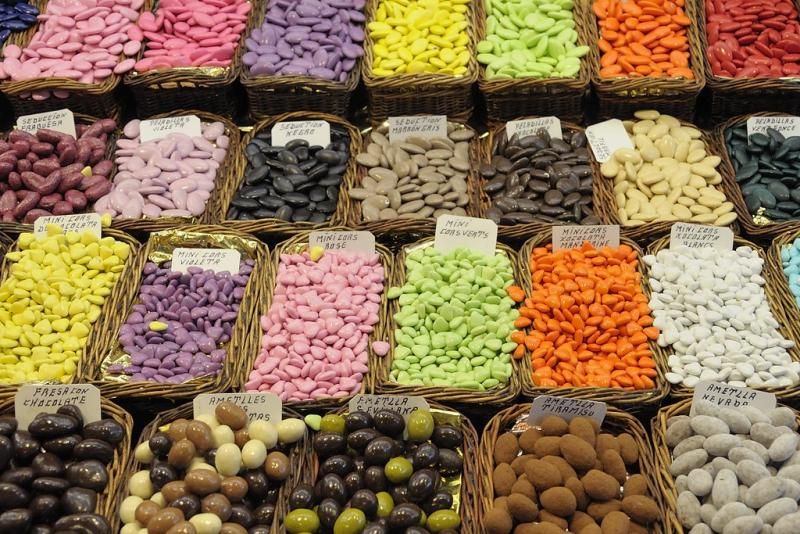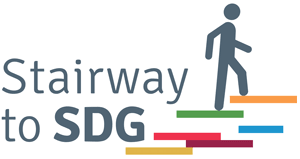Introduction

"Barcelona, Spain 2012 - The Boqueria Market" (by Maurizio Costanzo - mavik2007 on flickr.com)
One of the greatest global challenges is to integrate environmental sustainability with economic growth and welfare by decoupling environmental degradation from economic growth and doing more with less.
Ensuring sustainable consumption and good production practices necessarily entails respecting the planet’s biophysical limits and reducing current global consumption rates, in order to adjust to the planet's capacity to renew the resources with use.
Every year, an estimated one third of all the food produced – equivalent to 1.3 billion tons worth around 1 trillion US dollars – ends up rotting in the bins of consumers and retailers, or being spoilt due to poor transportation and harvesting practices.
The purpose of this activity is to raise students’ awareness about responsible consumption in an entertaining way through role playing games.
In the first part of the activity we will discuss and realize the different parties’ respective interests without undervaluing any of them. The second part is more didactic: the students will figure out the differences between the local market and the large scale retail of (hyper) markets.
Is it logical to consume potatoes from France or asparagus from China or Peru, when these products can be found a few kilometers away from our homes? Is it necessary to wrap fruits, vegetables or sausages in several plastic bags? Would lettuces escape if we did not? Is a perfect, shiny apple better than one with spots where insects began to feed?
Action Areas
- Sustainable production and consumption
- Conscious consumption
- Dealing with waste (Reduce Reuse Recycle)
Learning Objectives
- The learner understands production and consumption patterns and value chains and the interrelatedness of production and consumption (supply and demand, toxics, CO2 emissions, waste generation, health, working conditions, poverty, etc. ).
- The learner is able to differentiate between needs and wants and to reflect on their own individual consumer behaviour in light of the needs of the natural world, other people, cultures and countries, and future generations.
- The learner is able to challenge cultural and societal orientations in consumption and production.
- Systems thinking competency
- Anticipatory competency
- Self-awareness competency
Instructions
Step 1) Role-playing game (60 minutes)
For the first part of the role-playing activity, we will work with a group of 5 students. Students play different roles:
- Producer
- Seller
- Consumer
- Waste Manager
- Administration
They choose a product to trade, discuss the costs of production, the benefit left to the seller and how waste affects the environment. The rest of the class intervene as a participating audience and will have the right to ask questions and make criticisms of the different characters. To keep order, the teacher will act as moderator. At the end of each activity you will have two minutes to carry out an evaluation of the said activity.
Step 2) Visiting the markets (one morning)
The second part of the activity is practical and takes place outside the educational center. At this point several options are considered depending on the professional sector. One type of activity named "WE ARE GOING TO THE MARKET" can be common for any professional VET family, since we are all consumers. One day the teacher will take his students to a local open air market and to a wholesale market.
The aim is to compare the products’ origins, quality, prices, and which of them generate more waste. During these visits the students will be divided into two groups, in which they will be assigned roles again:
- Fruit/Vegetable Controller: They will take note about the origin, price, quality, etc. of different types of fruits/vegetables. Both in the local market and in the retailing market.
- Environmental Inspector: they will take note on the kinds of wrappers and supports that are used to store food: what type of materials are used, where they end up and whether they are recyclable or reusable.
Step 3: Conclusion (30 minutes)
The students with the teacher will go back to class to recapitulate and discuss both experiences. On a blackboard each student summarizes in a sentence what they have learnt during the activity.
- CALL TO ACTION 1
In recent years a movement called Slow Food has developed among environmental activists. Its work is based on a notion of food quality defined by three interrelated principles: good, clean and fair. GOOD: tasty and fresh seasonal food that satisfies the senses and is part of the local culture. CLEAN: production and consumption of food that does not harm the environment, animal welfare or human health. FAIR: affordable prices for consumers and fair rewards for producers. With this call to action, students are asked to learn about movements similar to Slow Food in their city. If there are such movements, they can take part as volunteers in one of them or invite one of the representatives to school to explain their actions as a responsible consumption alternative. If on the contrary these movements do not exist, students can undertake a search in restaurants, supermarkets, neighborhood shops and discuss with those responsible to find a solution in accordance with the values and philosophy of Slow Food.
- CALL TO ACTION 2
From the garden to the table.
- Urban gardens. One of the ways to reduce our environmental impact and contribute to a fairer society through our consumption is to buy directly from the producer. The teacher together with the students organize a few days of voluntary work in a urban garden of their city. It is recommended that it be developed in spring or a warmer season, and that students can see the whole "productive" process, up to the distribution of food baskets. During the day students can take photos and/or videos and create a video summary with reflections on their experience and the advantages for both the consumer and society in general of this way of production and consumption.
- Cooperatives and consumption groups. A consumer group is a group of people who come together, moved by various reasons (health is often the main reason), to make family purchases together and thus obtain various advantages, namely benefits affecting both group members and society in general, the environment, etc... To complete the information, students can document (through web searches or interviews with those in charge, or by visiting a site) the consumption groups in their city. How do they work? Who does participate? Why is a consumer group created? What are the advantages?
Notes for Educators
Estimated Total Duration: 1 hour and 30 minutes in class + one morning outside + Call to Action
VARIANT - There is a variant of the activity that can be applied in the Vehicle Maintenance: Visit to a car dealer
The aim is for students to investigate the commercial and consumer practices we adopt when making a purchase, as well as to learn to put themselves in different roles and know how to defend different points of views. It is interesting that students become aware of the journey the vehicle takes until reaching our hands, and also about transport, production, transport of the components, materials needed and where they are produced. After visiting the concessionaire and with the necessary information, they organize to assume various roles: Customer, Seller, Personnel in charge of the concessionaire. They could work in groups of three. First of all it is a matter of informing themselves about the problems that the car has, our real needs and what affects both the industry and the way we operate. Then there would be a pooling of inputs from the groups to draw conclusions.
Tips for educator:
- One of the most important aspects of this activity is for the educator to be able to convince the students that the activity they are going to do has meaning and a great importance for their personal and human development, even if it is different from the programme of the Formative Cycle’s curriculum.
- The visit to the market/hypermarket (or to the car dealer) should be for the students a fun and interesting activity. Is important that the teacher plans the activity in advance.
- Make the groups and assign the roles to the students in a funny way so that they can break the ice and participate actively in the activity.







